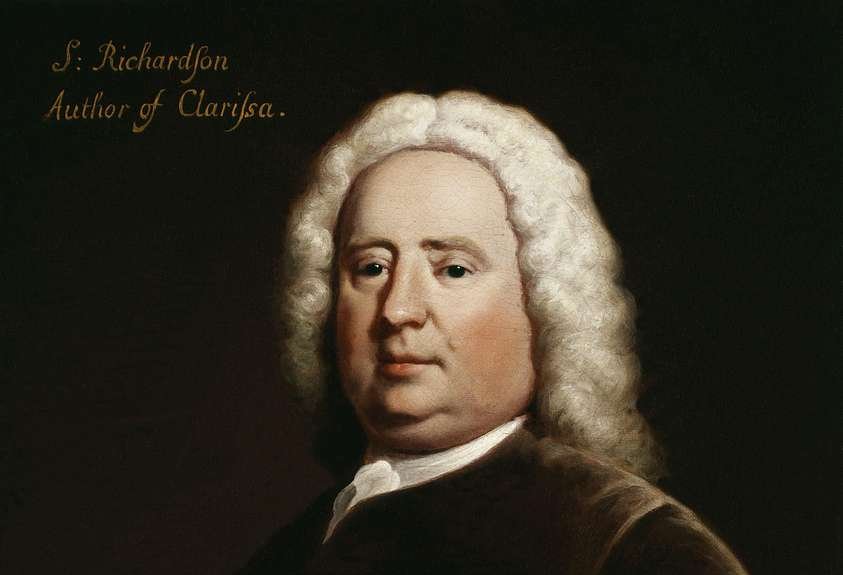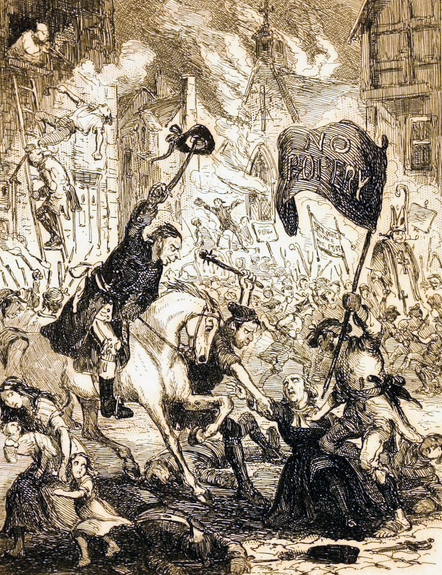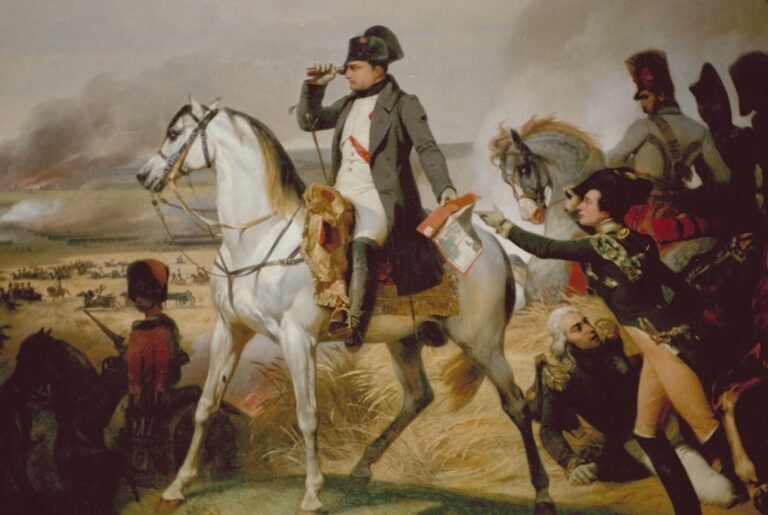Samuel Richardson was a pioneering English novelist of the 18th century. He is best known for his epistolary novels, which were written in the form of letters.
Richardson’s works, such as “Pamela” and “Clarissa,” have left a lasting mark on literature. His storytelling techniques and character development were innovative for his time. Richardson’s novels explore themes of virtue, morality, and human relationships. They provide a window into the social and cultural norms of his era.
By delving into Richardson’s life and works, readers can gain a deeper understanding of early English literature. His influence extends beyond his own time, impacting authors and readers for generations. So, who was Samuel Richardson, and why does his work still matter today? Let’s find out.

Credit: artuk.org
Introduction To Samuel Richardson
Samuel Richardson, an English writer, is known for his epistolary novels. He wrote during the 18th century. His works are still studied today.
Early Life
Samuel Richardson was born in Derbyshire in 1689. His parents were not wealthy. He had little formal education. Richardson was the third of nine children. His family moved to London when he was young. There, he learned to read and write.
From a young age, he loved books. He enjoyed telling stories. His passion for writing grew over time.
Literary Beginnings
Richardson started his career as a printer. This gave him access to many books. He began writing letters for friends. This practice helped him refine his skills.
In 1740, he published “Pamela, or Virtue Rewarded.” This novel was an instant success. It was written in letter form. Readers loved the engaging style. Richardson continued to write in this format. His novels were popular and influential.
Rise Of Epistolary Novels
The rise of epistolary novels marks a significant era in literary history. Samuel Richardson, a pioneer in this genre, transformed storytelling. He used letters to reveal characters’ thoughts and feelings. This method brought readers closer to the narrative. Let’s explore this fascinating evolution.
Definition And Characteristics
Epistolary novels are stories told through letters or diary entries. This format allows writers to present different perspectives. Readers get an intimate look into the characters’ minds. It’s like peeking into someone’s private life. The letters create a sense of realism and immediacy. You feel the emotions as the characters experience them.
Popularity In The 18th Century
The 18th century saw a boom in epistolary novels. Samuel Richardson’s “Pamela” and “Clarissa” became hugely popular. These works captivated readers with their emotional depth. The format suited the period’s taste for introspection. People enjoyed the detailed exploration of personal experiences.
Epistolary novels also reflected the era’s communication style. Letter writing was a common way to share news and stay in touch. This made the stories relatable. Readers felt like they were part of the characters’ lives. The format’s popularity continued to grow, influencing other writers.
Pamela: A Groundbreaking Work
Samuel Richardson’s novel, Pamela, stands as a landmark in English literature. This book, published in 1740, introduced a new form of storytelling. It used letters and journal entries to tell its story, making it one of the first epistolary novels. Its unique style and themes made it a subject of much discussion.
Plot Summary
Pamela tells the story of a young maid named Pamela Andrews. She works for a wealthy landowner, Mr. B. When Mr. B attempts to seduce her, Pamela resists. She writes about her struggles in letters to her parents. This gives readers a deep look into her thoughts and feelings.
Mr. B’s advances grow more aggressive. Pamela’s virtue and steadfastness never waver. Eventually, Mr. B recognizes her worth and proposes marriage. Pamela accepts, and they marry. The novel ends with Pamela’s rise in society, showing the power of virtue and integrity.
Cultural Impact
The publication of Pamela had a significant impact on society and literature. It inspired many debates about class and virtue. Some praised the novel for its moral lessons. Others criticized it, claiming it promoted deceit.
Richardson’s novel influenced other writers and popularized the epistolary form. It also gave rise to a new genre: the novel of sensibility. This genre focused on emotion and individual experiences.
Furthermore, Pamela sparked a trend in domestic novels. These stories often featured female protagonists and explored their inner lives. This shift paved the way for future authors like Jane Austen and the Brontë sisters.
To illustrate its cultural impact, here is a table summarizing key points:
| Aspect | Impact |
|---|---|
| Literary Form | Introduced the epistolary novel |
| Genre | Paved the way for novels of sensibility |
| Social Commentary | Debated class and virtue |
| Influence | Inspired future novelists |
Pamela remains a key work in literary history. Its themes and storytelling continue to be studied and appreciated today.
Clarissa: A Tragic Masterpiece
Samuel Richardson’s “Clarissa: A Tragic Masterpiece” is a poignant and detailed exploration of human relationships and societal expectations. The novel, published in 1748, is one of the longest novels in the English language. Yet, it remains a captivating story of love, betrayal, and tragedy.
Storyline Overview
“Clarissa” tells the story of Clarissa Harlowe, a young woman from a wealthy family. Her family pressures her to marry a man she does not love. She flees from her oppressive home and falls into the clutches of the manipulative Robert Lovelace. Lovelace’s deceitful actions lead to Clarissa’s downfall and ultimate tragedy.
Themes And Motifs
The novel explores themes of virtue, honor, and integrity. Clarissa’s struggle against societal constraints highlights the conflict between personal desires and familial duty. Themes of power and manipulation are evident in Lovelace’s actions. The novel also touches on the role of women in the 18th century. It portrays their limited choices and the consequences of defying societal norms.
The Influence Of Richardson’s Works
Samuel Richardson, an 18th-century English writer, left a lasting mark on literature. His novels, including “Pamela” and “Clarissa,” influenced readers and writers alike. Richardson’s storytelling was groundbreaking. It shaped the future of the novel as a literary form.
Contemporary Reception
During his time, readers eagerly awaited Richardson’s next book. “Pamela” was an instant success. Readers praised its realistic characters. They felt drawn into the story. Critics, however, had mixed opinions. Some admired his moral lessons. Others thought his writing was too sentimental. Despite this, Richardson’s works were widely discussed. They sparked conversations about virtue and class.
Long-term Legacy
Richardson’s influence extends beyond his era. Modern writers still study his narrative techniques. His focus on character development set a new standard. He introduced the epistolary format to novels. This style, using letters, created a sense of intimacy. Readers felt connected to characters’ inner thoughts.
Richardson also inspired other famous authors. Jane Austen admired his work. Charles Dickens, too, drew from Richardson’s approach. Even today, his impact is seen in modern literature. His themes of morality and social class remain relevant. Samuel Richardson’s legacy endures. His contributions continue to shape storytelling.

Credit: en.wikipedia.org
Criticism And Controversies
Samuel Richardson, an influential 18th-century English writer, is best known for his novels “Pamela” and “Clarissa.” Despite his success, his work has not been free from criticism and controversies. Critics have debated his literary style and the social and moral themes in his novels.
Literary Criticism
Richardson’s writing style received mixed reviews. Some praised his detailed character development. Others felt his novels were too lengthy and slow-paced. His use of epistolary format, where the story unfolds through letters, was innovative. Yet, it also drew criticism. Some readers found it repetitive and tedious. Despite these critiques, Richardson’s influence on the novel form cannot be denied.
Social And Moral Debates
Richardson’s novels sparked significant social and moral debates. “Pamela” faced criticism for its portrayal of virtue and morality. Critics argued that the story promoted social climbing through marriage. On the other hand, “Clarissa” dealt with dark themes like sexual assault. This led to heated discussions on the portrayal of female suffering. Many felt Richardson’s depiction was too graphic and sensational.
These controversies did not diminish Richardson’s impact. Instead, they highlighted the power of literature to provoke thought and discussion.
Samuel Richardson’s Writing Style
Samuel Richardson was a master of the epistolary novel. His writing style is unique and meticulous. He used letters to convey the inner thoughts and emotions of his characters. This method gave readers a deep connection to the story. Richardson’s style is marked by detailed character development and intricate narrative techniques.
Narrative Techniques
Richardson’s narrative techniques stand out in his novels. He used the epistolary format, where the story unfolds through letters. This method allows for multiple perspectives. Readers get to see the same event through different eyes. It creates a rich, multi-layered narrative.
His novels often include long, detailed descriptions. These descriptions help build the world of the story. They also provide insight into the characters’ minds. Richardson’s use of direct address also engages the reader. Characters often speak directly to the reader, creating an intimate connection.
Character Development
Richardson’s character development is thorough and meticulous. He created complex characters with deep emotional lives. Each character has a unique voice and perspective. This makes them feel real and relatable.
He often used detailed letters to develop his characters. Through their letters, readers see their hopes, fears, and motivations. Richardson’s characters grow and change over time. This adds depth to the story and keeps readers engaged.
He also paid attention to minor characters. Even the secondary characters are well-developed and important to the story. This attention to detail makes his novels rich and immersive.
Impact On Future Novelists
Samuel Richardson left a significant mark on literature. His work influenced many future novelists. His style and themes shaped the evolution of the novel. Richardson’s impact is visible in the writings of many authors who followed him.
Inspiration To Authors
Richardson’s detailed characters inspired many writers. He brought depth and realism to fiction. His novels, like “Pamela” and “Clarissa,” showed human emotions vividly. These works encouraged authors to explore deep character development.
Many admired his focus on moral themes. Richardson’s stories often had a strong ethical message. This approach inspired writers to include morals in their own works.
Evolution Of The Novel
Richardson played a key role in the novel’s evolution. His epistolary style, using letters to tell the story, was innovative. It added a personal touch and made readers feel close to the characters.
His focus on the inner lives of characters was also groundbreaking. This method influenced the psychological depth seen in modern novels. Richardson’s work paved the way for future novelists to explore complex emotions and thoughts.
| Aspect | Influence |
|---|---|
| Character Development | Deep, realistic characters |
| Morality | Strong ethical messages |
| Epistolary Style | Personal, letter-based storytelling |
| Psychological Depth | Exploring inner lives |
Richardson’s impact on future novelists is profound. His contributions to character development, moral storytelling, and novel structure are invaluable. He set a high standard for authors to follow.
FAQs
Who was Samuel Richardson?
Samuel Richardson was an 18th-century English writer and printer. He is best known for his epistolary novels “Pamela,” “Clarissa,” and “Sir Charles Grandison. “
What is Samuel Richardson Known for?
Samuel Richardson is known for pioneering the epistolary novel. His works “Pamela” and “Clarissa” are prime examples.
When did Samuel Richardson live?
Samuel Richardson lived from 1689 to 1761. He was active during the early 18th century.
Why is “pamela” significant?
“Pamela” is significant for being one of the first English novels. It explored themes of virtue and social class.
Conclusion
Samuel Richardson’s contributions to literature are immense. His novels offer deep insights. They explore human nature and society. His works remain relevant today. Readers find his characters relatable and engaging. Richardson’s storytelling skills set him apart. His legacy continues to influence writers.
Discover his timeless stories and appreciate his genius. Richardson’s impact on literature endures. Dive into his world and enjoy the journey.








